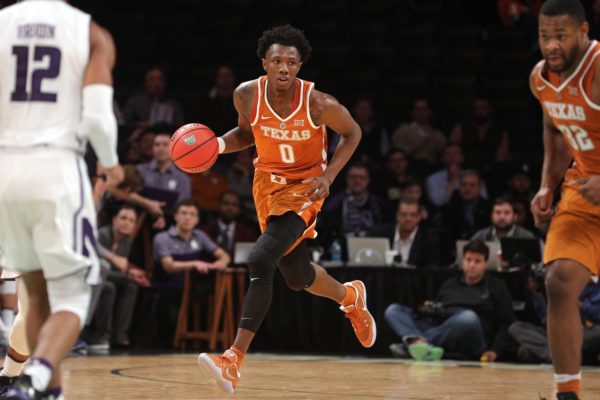Lost in Transition: Texas Basketball Needs Time for Defense to Arrive
Posted by Justin Kundrat on November 23rd, 2016Longtime Shaka Smart followers wouldn’t even recognize this year’s Texas team. His patented HAVOC system, designed to produce chaos by pressuring opposing ball-handlers, appears to be in place in name only. His best teams at VCU were never particularly effective in the half-court, winning instead by continually forcing turnovers and converting those miscues into points on the other end. At its peak, the Rams produced turnovers on over 23 percent of opponents’ possessions for four consecutive seasons. However, last season’s Texas team was the slowest that Smart has ever coached, and while possessions this season have ticked up, the Longhorns’ version of HAVOC is still a far cry from the VCU heyday.
The overarching sentiment when it comes to rebuilding programs is that it takes a few years for a new coach to recruit and develop players that fit his system. That’s certainly been the case for Smart in Austin so far, but the playing field is remarkably different at a Big 12 school with a longstanding athletic history and gravitational pull in recruiting. The program-oriented, four-year players that Smart was formerly coaxing into to the VCU basketball philosophy are now being replaced by highly-touted prep stars whose names are plastered on mock NBA Draft boards before setting foot on campus. This of course does not mean Smart won’t be successful at Texas, but it does mean some of his players won’t be sticking around for an entire collegiate career. Elite defense the way HAVOC is played isn’t simply a byproduct of having excellent talent — it requires a certain degree of roster continuity to run a complicated system where players incessantly communicate and work together to establish their traps. So when should we expect to see an effective version of the assault-style defense that made Smart’s VCU teams so imposing? The answer might be never.
This leaves Texas basketball in a strange, transitory period. While lacking experience, continuity and the requisite turnover-generating defense, Smart’s Texas roster is intriguing in its potential to mirror the past. Kerwin Roach and Andrew Jones are tenacious on-ball defenders whose lateral speed works well in a full-court press. When paired together, this backcourt combination forces turnovers on 29.4 percent of opponents’ possessions. Tevin Mack and Eric Davis are particularly effective at flanking the sidelines as secondary defensive trappers, and putting a player like Davis alongside Jones produces a defense that currently allows just 0.75 points per possession (compared with 1.02 PPP using other lineups). And there’s a reason the 6’11” Jarrett Allen projects as a future lottery pick — his 7’5″ wingspan and ability to guard multiple positions has given the Longhorns a back line rim protector in the full-court press.
On paper, the Longhorns’ defensive flaws are difficult to imagine. Game film, however, presents a different story. Against experienced teams such as Northwestern and Colorado, Texas’ full-court defensive chemistry was amiss: traps were a step too slow and overly aggressive help defense led to muffed switching and open threes. This resulted in two losses at the Legends Classic this week, with the Longhorns giving up X.XX points per possession. When his team eventually has sufficient experience playing together, Smart will be able to fully implement his defensive system. But in a program that will inevitably experience a number of early departures, he might not have enough of one of HAVOC’s key ingredients: time.











































